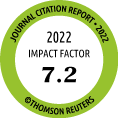Return to content in this issue
Anaphylaxis: Mediators, Biomarkers, and Microenvironments
Fernandez-Bravo S1, Palacio-Garcia L1, Requena-Robledo N1, Yuste-Montalvo A1, Nuñez-Borque E1*, Esteban V1,2*
1Department of Allergy and Immunology, IIS-Fundación Jiménez Díaz, UAM, Madrid, Spain
2Faculty of Medicine and Biomedicine, Alfonso X El Sabio University, Madrid, Spain
*Equal contribution to this work.
J Investig Allergol Clin Immunol 2022; Vol 32(6)
: 419-439
doi: 10.18176/jiaci.0854
The life-threatening nature of anaphylactic reactions has increased interest in discovering new biomarkers that could improve diagnosis and prevention. However, the diverse nature of the clinical features and the etiology and pathogenesis of anaphylaxis hinder the identification of valuable molecular indicators of disease.
Most studies on anaphylaxis focus on the immune system. Anaphylactic reactions are characterized primarily by IgE-mediated activation of mast cells and basophils and release of mediators. Determination of serum tryptase levels is the main in vitro test used to confirm the reaction, although there are no biomarkers that can predict it. Nevertheless, recent research has postulated that alternative pathways, cell types, and systems are involved. Consequently, various molecular products have been explored and considered potential biomarkers, although none of them are yet used in clinical practice. The products that are altered in patients with anaphylaxis include vasoactive agents, proteases, proteoglycans, lipids, interleukins, cytokines, products of the complement-contact and coagulation systems, circulating proteins, extracellular vesicles, microRNAs, and metabolites. The recognition of biological processes and molecular pathways affecting the microenvironments involved in anaphylaxis will considerably improve clinical practice and the identification of better molecular markers. We offer a broad review of the various mediators described in anaphylaxis, consider their usefulness as potential biomarkers of this pathological event, and examine their role in the molecular basis of the reaction.
Key words: Anaphylaxis, Biomarker, Mast cells, Mediators, Microenvironments



